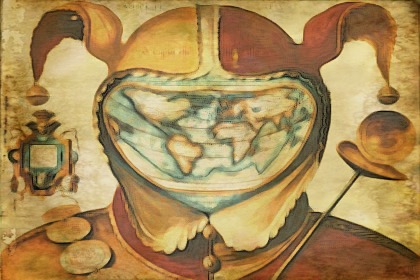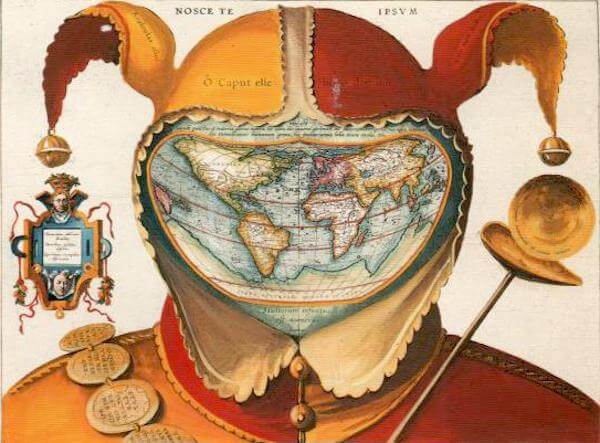A collection . . .
essays
on assignment
stories
letters
archives
and the mysterious Fool’s Cap Map of the World
About the Map
“We are the planet, fully as much as water, earth, fire and air are the planet, and if the planet survives, it will only be through heroism. Not occasional heroism, a remarkable instance of it here and there, but constant heroism, systematic heroism, heroism as governing principle.”
— Russell Banks
Continental Drift
The Fool’s Cap Map of the World is an enigma. Printed circa 1590, the artist and location of its publishing remain unknown. The Latin script alludes to the artist as Epichtonius Cosmopolites; the words translate approximately as “Everyman Indigenous to Himself.”
“This startling and disturbing image is one of the enigmas of cartographic history. The artist, date and place of publication are all unknown, and one can only guess at its purpose. The geography of the map strongly resembles that of the world maps of Ortelius published in the 1580s, giving a tentative date of c. 1590. This is the earliest known use of the world map in a visual joke. Its central visual metaphor is the universality of human folly and various mottoes around the map reinforce that theme…
“A strong legacy of the theme of the Fool exists in literature and popular art from the fourteenth to seventeenth centuries. The Fool was licensed to break rules, speak painful truths and mock power and pretension, and the grotesque shape he bore was a kind of living punishment. This frame of reference would have been quite familiar to the audience of this engraving in the 1590s. And people would have recognized in this map a radical visual interpretation of the Fool’s role: it is now the whole world that takes on the Fool’s costume, thus forcing the viewer to confront the possibility that the entire created order is irrational, alien and threatening.”
— Peter Whitfield, The Image of the World

